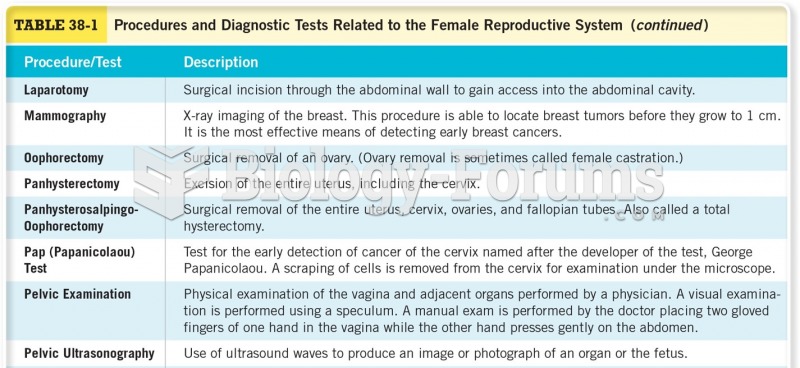Answer to Question 1
D
Feedback:
The myelogram is an x-ray examination of the spinal cord and vertebral canal after injection of a contrast medium or air into the spinal subarachnoid space. This diagnostic procedure is particularly valuable for evaluating spinal cord abnormalities caused by tumors, herniated intervertebral disks, or other lesions. An arthrogram is an x-ray study of a joint. A bone scan is used to detect primary bone tumors, metastatic bone disease, osteomyelitis, osteoporosis, inflammation, bone or joint infections, and stress fractures. Ultrasound technology helps to evaluate soft tissue masses, osteomyelitis, infection, congenital and acquired pediatric disorders, bone mineral density, sports injuries, and fracture healing.
Answer to Question 2
A
Feedback:
Postterm babies are those born past 42 weeks of gestation. These babies often appear wrinkled and old at birth. They often have long fingernails and hair, dry parched skin, and no vernix caseosa. Both the quantity of lanugo and the amount of vernix decrease with gestational age. Undescended testes are usually not seen in postterm newborns; however, they are highly prevalent in preterm infants.







